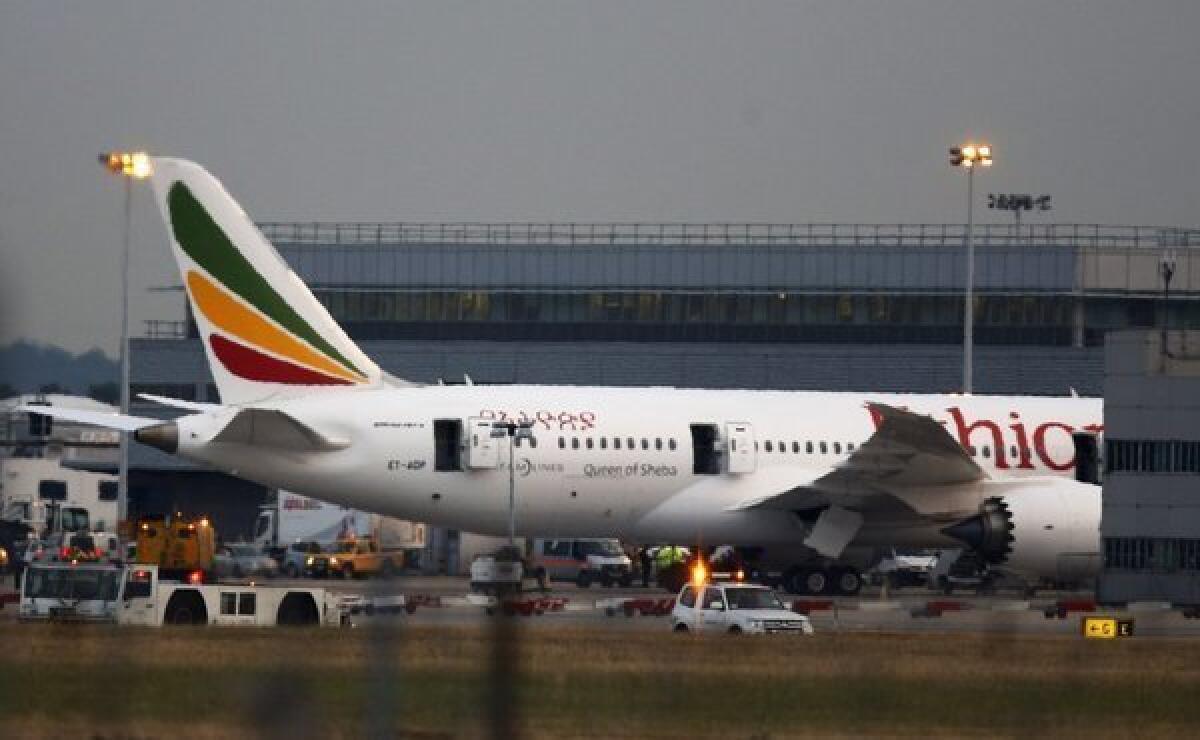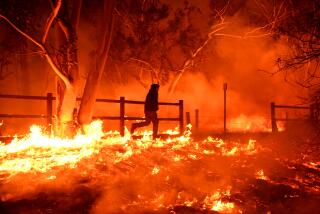Boeing supplier asked to participate in Dreamliner fire probe

- Share via
A key supplier on Boeing Co.’s 787 Dreamliner passenger jet has confirmed it has joined the ongoing investigation into a fire that broke out last week on an Ethiopian Airlines aircraft parked at London’s Heathrow Airport.
Honeywell International Inc. makes the plane’s emergency locater transmitter, which is a device installed on all commercial airplanes. Known as an ELT, it transmits signals in an emergency. So if a plane is involved in a crash, the transmitter will alert search parties to its location.
The emergency locater transmitter is not known to be a fire risk.
FULL COVERAGE: Boeing’s troubled Dreamliner
Honeywell said the transmitter has been certified by the Federal Aviation Administration since 2005 and installed on more than 3,000 planes of various models.
“It’s far too premature to speculate on the cause, or draw conclusions,” company spokesman Steve Brecken said in a statement. “We’ve not seen nor experienced a single reported issue on this product line.”
The transmitter is installed on the top of the 787 near the tail-end of the plane, where the fire appeared to be burning Friday. The 787 had been sitting at a remote parking stand for more than eight hours at Heathrow Airport when it caught fire. No one was aboard the Ethiopian Airlines plane and no one was injured, the airline and an airport spokeswoman said.
Heathrow closed two of its runways for 90 minutes, delaying flights. Images from the scene showed emergency vehicles with fire-retardant foam sprawled across the ground.
On Saturday, investigators said they found no evidence that the internal fire was linked to problematic aircraft batteries that grounded the worldwide fleet of 787s for nearly four months, Britain’s Air Accidents Investigation Branch said.
In a statement, the agency said that “it is clear that this heat damage is remote from the area in which the aircraft main and APU [auxiliary power unit] batteries are located, and, at this stage, there is no evidence of a direct causal relationship.”
The aerospace giant first hit turbulence with the batteries in January, when federal regulators banned all 787 planes from flying for four months after batteries on two planes overheated, with one catching on fire.
Boeing later ordered modifications to the jets to increase ventilation and insulation near the batteries, but the company and investigators never determined the root cause of the overheating.
The Chicago company has hitched its fortunes on the 787, a long-range, wide-body plane considered an engineering marvel. Its carbon-composite exterior and technical designs make it extremely fuel-efficient, an attractive quality for airlines at a time of high fuel prices.
Airlines have ordered 930 Dreamliners, making it one of the most coveted commercial jets. The company has delivered 68 of the jets.
In Monday trading, Boeing’s shares were up $3.79, or 3.7% to $105.66, recovering much of its loss of 4.7%, or $5.01, on Friday.
ALSO:
Navy drone X-47B lands on carrier deck in historic first
Boeing 787 Dreamliner catches fire; stock takes a beating
No evidence batteries involved in Dreamliner fire, investigators say
More to Read
Inside the business of entertainment
The Wide Shot brings you news, analysis and insights on everything from streaming wars to production — and what it all means for the future.
You may occasionally receive promotional content from the Los Angeles Times.










